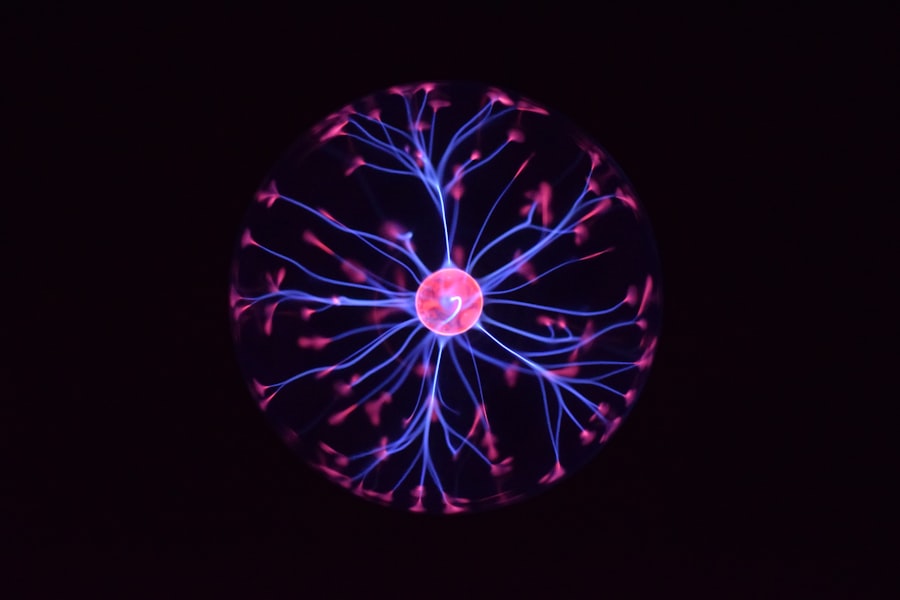In today’s fast-paced world, digital habits have become an integral part of your daily life. From the moment you wake up to the sound of your smartphone alarm to the last scroll through social media before bed, technology is woven into the fabric of your routine. These habits, whether conscious or unconscious, shape how you interact with the world around you.
As you navigate through various digital platforms, it’s essential to recognize how these habits influence not only your productivity but also your mental well-being. Understanding digital habits is crucial in a society that increasingly relies on technology for communication, entertainment, and information. You may find yourself reaching for your phone out of habit rather than necessity, leading to a cycle of constant engagement with screens.
This article will explore the intricate relationship between your brain and digital habits, shedding light on the underlying mechanisms that drive your behavior in the digital realm.
Key Takeaways
- Digital habits are ingrained behaviors related to the use of technology and the internet.
- The brain plays a crucial role in the formation and reinforcement of digital habits.
- Dopamine, a neurotransmitter, is closely linked to the development and maintenance of digital habits.
- Digital habits can have a significant impact on the brain’s reward system, leading to addictive behaviors.
- Neuroplasticity allows the brain to adapt and change in response to digital habits, shaping our cognitive processes.
The Role of the Brain in Digital Habits
Your brain plays a pivotal role in forming and maintaining digital habits. It is a complex organ that processes information, makes decisions, and regulates emotions. When you engage with digital content, your brain is constantly adapting to new stimuli, which can reinforce certain behaviors over time.
The neural pathways associated with these habits become stronger with repetition, making it easier for you to engage in them without conscious thought. As you immerse yourself in digital environments, your brain’s reward system becomes activated. This system is responsible for reinforcing behaviors that are pleasurable or rewarding.
When you receive notifications or likes on social media, for instance, your brain releases neurotransmitters that create feelings of satisfaction and happiness. This positive reinforcement encourages you to continue engaging with digital platforms, often leading to habitual use that can be difficult to break.
Dopamine and Digital Habits

Dopamine, often referred to as the “feel-good” neurotransmitter, plays a significant role in shaping your digital habits. When you engage with technology—whether by checking emails, scrolling through social media feeds, or playing video games—your brain releases dopamine as a reward for these activities. This release creates a sense of pleasure that reinforces your desire to repeat the behavior, leading to a cycle of habitual engagement.
You may notice that the anticipation of receiving a notification or message can trigger a dopamine response even before you check your device. This anticipation can create a compulsion to stay connected, as your brain craves the reward associated with digital interactions. Over time, this can lead to an increased reliance on technology for emotional gratification, making it challenging to disconnect and engage in offline activities.
The Impact of Digital Habits on the Reward System
| Metrics | Findings |
|---|---|
| Dopamine release | Increased due to digital habit forming behaviors |
| Reward system activation | Overstimulated by constant digital stimuli |
| Attention span | Decreased as a result of frequent digital distractions |
| Productivity | Impacted negatively by excessive digital habits |
Your reward system is intricately linked to your digital habits, influencing how you perceive and respond to various stimuli in your environment. When you engage with technology, the immediate rewards—such as likes, shares, or comments—can create a sense of validation and belonging. This instant gratification can overshadow other rewarding experiences in your life, leading you to prioritize digital interactions over face-to-face connections.
As you become more accustomed to the rapid feedback loops provided by digital platforms, your brain may start to expect similar rewards from other areas of life. This shift can diminish your ability to find joy in activities that require patience and effort, such as pursuing hobbies or building relationships. The constant availability of digital rewards can create a cycle where you seek out technology for fulfillment, often at the expense of more meaningful experiences.
Neuroplasticity and Digital Habits
Neuroplasticity refers to the brain’s ability to reorganize itself by forming new neural connections throughout life. This remarkable capacity means that your digital habits can shape the structure and function of your brain over time.
This adaptability highlights the importance of being mindful about how you interact with digital devices. You have the power to influence your brain’s neuroplasticity by consciously choosing how you engage with technology. By setting boundaries around screen time or prioritizing offline activities, you can encourage the development of healthier habits.
This intentional approach can help reshape your neural pathways, fostering a more balanced relationship with technology that supports both productivity and well-being.
The Role of Attention and Digital Habits

Attention is a finite resource, and how you allocate it can significantly impact your digital habits. In an age where distractions are just a click away, maintaining focus can be challenging. You may find yourself multitasking between various apps and notifications, which can fragment your attention and reduce overall productivity.
This constant shifting can lead to cognitive overload, making it difficult for you to concentrate on tasks that require deep thinking. To cultivate healthier digital habits, it’s essential to develop strategies for managing your attention effectively. You might consider setting specific times for checking emails or social media rather than allowing these platforms to dictate your focus throughout the day.
By creating designated periods for digital engagement, you can enhance your ability to concentrate on important tasks while still enjoying the benefits of technology.
The Influence of Social Media on the Brain
Social media has transformed how you connect with others and consume information. While it offers opportunities for communication and community-building, it also has profound effects on your brain’s functioning. The constant influx of information and social validation can lead to heightened levels of anxiety and stress as you navigate the pressures of online interactions.
You may find yourself comparing your life to others based on curated images and posts, which can distort your self-perception and contribute to feelings of inadequacy. The addictive nature of social media platforms often keeps you engaged longer than intended, further reinforcing these negative feelings. Understanding the psychological impact of social media is crucial for developing healthier habits that prioritize genuine connections over superficial interactions.
Strategies for Managing Digital Habits
To cultivate a healthier relationship with technology, consider implementing strategies that promote mindful engagement with digital platforms. One effective approach is setting specific goals for your screen time. You might start by tracking how much time you spend on various apps and identifying areas where you can cut back.
By establishing limits, you can create space for more meaningful offline activities. Another strategy involves creating tech-free zones or times in your daily routine. For instance, designating certain hours as “device-free” can encourage you to engage in hobbies or spend quality time with loved ones without distractions.
Additionally, practicing mindfulness techniques—such as meditation or deep breathing—can help you become more aware of your digital habits and their impact on your mental state.
The Link Between Digital Habits and Mental Health
The relationship between digital habits and mental health is complex and multifaceted. While technology can provide valuable resources for support and connection, excessive use can lead to negative outcomes such as anxiety, depression, and loneliness. You may find that constant exposure to curated online personas exacerbates feelings of inadequacy or isolation.
Recognizing this link is essential for fostering a healthier mindset around technology use. By prioritizing self-care practices and seeking balance in your digital interactions, you can mitigate some of the adverse effects associated with excessive screen time. Engaging in offline activities that bring joy and fulfillment can help counteract the negative impact of digital habits on your mental health.
The Role of Technology in Shaping Digital Habits
Technology itself plays a significant role in shaping your digital habits through design features that encourage engagement. Many apps are designed with algorithms that prioritize user retention by providing personalized content tailored to your interests. This design creates an environment where it’s easy to lose track of time as you scroll through endless feeds or binge-watch shows.
Being aware of these design elements can empower you to take control of your digital habits. You might consider curating your app usage by unfollowing accounts that don’t contribute positively to your well-being or disabling notifications that disrupt your focus. By actively managing how technology influences your behavior, you can create a more intentional relationship with the devices that permeate your life.
Conclusion and Future Directions
As you reflect on the intricate relationship between digital habits and brain function, it’s clear that understanding this dynamic is essential for navigating today’s technology-driven world.
Looking ahead, it’s crucial to continue exploring the impact of technology on mental health and well-being.
As new platforms emerge and existing ones evolve, staying informed about their effects will empower you to make conscious choices about how you engage with them. By prioritizing balance and mindfulness in your digital interactions, you can foster a healthier relationship with technology that enhances rather than detracts from your overall quality of life.
In exploring the neurocircuitry of digital habits, it’s essential to consider how our brains adapt to the constant influx of digital stimuli. An insightful article on this topic can be found on Unplugged Psych, which delves into the psychological and neurological impacts of our digital interactions. This piece provides a comprehensive overview of how digital habits can reshape neural pathways, influencing behavior and cognition. For a deeper understanding, you can read more about these fascinating insights by visiting the article on Unplugged Psych.
WATCH THIS! Your Brain Is Not Bored; AI Is Stealing Your Dopamine (76-Minute Documentary)
FAQs
What is neurocircuitry of digital habits?
Neurocircuitry of digital habits refers to the brain’s neural pathways and connections that are involved in the formation and maintenance of digital habits, such as excessive use of social media, gaming, or internet browsing.
How does the brain form digital habits?
The brain forms digital habits through a process called neuroplasticity, where repeated engagement in digital activities can lead to changes in the brain’s neural circuitry, reinforcing the habit and making it more difficult to break.
What are the potential effects of digital habits on the brain?
Excessive digital habits can lead to changes in the brain’s reward system, attentional control, and emotional regulation, potentially contributing to issues such as addiction, anxiety, and decreased cognitive function.
Can digital habits be changed or reversed?
Yes, with intentional effort and behavioral changes, it is possible to rewire the brain’s neurocircuitry and break digital habits. This may involve setting limits on digital usage, seeking professional help, and engaging in alternative activities to replace digital habits.
Are there any strategies to manage digital habits and their impact on the brain?
Some strategies to manage digital habits and their impact on the brain include setting boundaries for digital usage, practicing mindfulness and self-awareness, seeking social support, and engaging in activities that promote overall brain health, such as exercise and adequate sleep.




